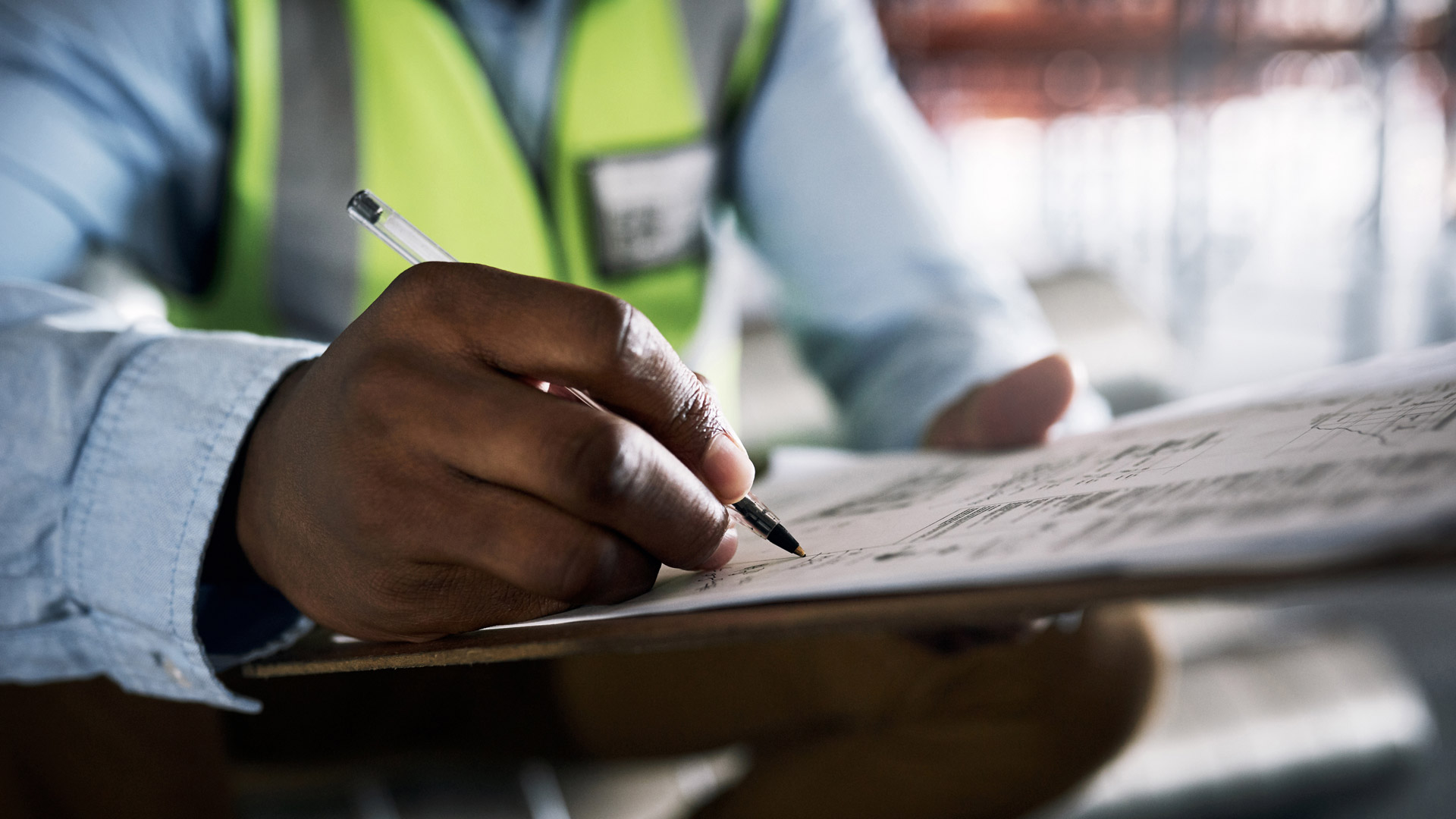INTRODUCTION
We all make assessments many times each day about the potential consequences that may arise from our actions. For example, although driving at 85mph on the motorway may make our journey shorter by a few minutes, we run the real risk of being involved in a collision, and increasing the severity of an injury should an accident occur.
However, in making the judgement to drive fast we have to correctly evaluate the risk – based on such information as the road conditions, and our own driving ability. This will depend on the likelihood and consequences of our actions and whether they are of an acceptable level.
The same applies to our actions in the workplace, where we have to plan how health and safety will be managed. An essential first step is risk assessment, through which methods are used to decide on priorities and to set objectives for eliminating hazards and reducing risks.
The benefits of a risk assessment are that it helps us to:
- Identify whether risks are being properly controlled.
- Meet the legal requirements.
- Show that you are managing health and safety properly.
This guide takes you through the basics.

1. IDENTIFY WHETHER RISKS ARE BEING PROPERLY CONTROLLED
Risk assessment requires employers to identify who may be harmed by their activities and how. This is really important since it is quite easy to forget about visitors, contractors and temporary staff when preparing risk assessments.
People’s capabilities also need to be taken into account. Additional attention should be given to protecting children and young persons, new and expectant mothers and anyone with a disability.
Risk assessments should also take account of normal operating conditions, occasional circumstances such as maintenance, abnormal circumstances and emergencies.
Risk assessments will challenge ways of working and ask if the equipment is suitable to the task. They will also challenge workers by asking if they are following a safe system or procedure, have all the information they need and are competent to carry out tasks.

MEET THE LEGAL REQUIREMENTS
Employers have a duty of care to assess risks and control hazards in their organisations. In the UK there are a substantial number of regulations that require employers to undertake specific risk assessments. They apply to work activities, chemicals, plant and equipment and the tasks that people do.
Government codes of practice and guidance on these specific areas of risk give excellent advice on how to comply with legal requirements, how to carry out risk assessments and control risks. Failure to follow this guidance might make an employer liable to prosecution. Legal action is costly, disruptive and damaging to reputation.
Risk assessment is a legal requirement in many countries. The UK’s Management of Health and Safety at Work Regulations 1999 require:
“Every employer shall make a suitable and sufficient assessment:
a) of the risks to the health and safety of his employees, and
b) of the risks to the health and safety of persons not in his employment.”

SIGNIFICANT FINDINGS
In practical terms, risk assessments need to be carried out for all work activities and areas where there is a risk of someone being injured. Where people work from home, outdoors or at another employer’s site, then a risk assessment of their particular activities and locations should also be carried out.
According to UK law, where there are five or more employees, the significant findings of the risk assessment must be recorded and made available to employees who are identified as being particularly at risk. Note that it doesn’t mean every single aspect of the risk assessment needs to be recorded. The level of detail depends on the complexity and seriousness of the risk. It is important that risk assessments are in plain language that can be easily understood and readily followed.

3. SHOW THAT YOU ARE MANAGING HEALTH AND SAFETY PROPERLY
Serious risks should always be addressed and eliminated or controlled so far as is reasonably practicable. Risk assessment can help to prioritise risks and deal with them in an effective and targeted way. It will help you determine how and where to deploy resources so that investment in health and safety is efficient.
If risks are identified correctly and everyone works safely, the organisation will be more efficient – workers should be happier at work and enjoy their work knowing that they are safe. Money will not be wasted on dealing with incidents at work and it will hopefully ensure the organisation does not get prosecuted.

‘SUITABLE AND SUFFICIENT’
Risk assessments can seem daunting at the outset. To make them easier, it is best to be systematic. They should be suitable for the purpose and go into a sufficient amount of detail. The level of detail will depend very much on the level of risk. The greater the risk, the more detail that you are likely to need to record.
The process of risk assessment requires a person to step back and evaluate how serious the risk is. There are five important questions to consider:
- Which activities are being performed?
- What equipment is being used?
- Where are the activities taking place?
- Who is involved in these activities?
- How often, and for how long, do these activities take place?
Risk assessment doesn’t have to be a complicated process – what is important is that it should concentrate on those significant hazards that could cause serious harm or affect a number of people.

REVIEWING RISK ASSESSMENTS
From time to time, things change, so it is important that you carry out a review of your risk assessments, particularly when they may no longer be valid. A review may be triggered by an accident or a change in a piece of workplace equipment, but it is also good practice to review all risk assessments at least annually.
Risk assessment is not meant to be a complicated process – it's about carrying out a careful examination of the workplace to identify hazards and then to assess the risks that could result. The aim is to prevent accidents and dangerous occurrences from happening at work and to reduce the incidence of occupational ill health.

KEY TAKEAWAYS
-
Risk assessment requires employers to identify who may be harmed by their activities and how.
-
People’s capabilities also need to be taken into account. Additional attention should be given to protecting children and young persons, new and expectant mothers and anyone with a disability.
-
In the UK there are a substantial number of regulations that require employers to undertake specific risk assessments.
-
Risk assessment gives employers and businesses a way to be proactive, to identify potential risks and to take action to remedy problems before they cause an accident or ill-health
-
According to UK law, where there are five or more employees, the significant findings of the risk assessment must be recorded and made available to employees who are identified as being particularly at risk.
-
Serious risks should be eliminated or controlled so far as is reasonably practicable.
-
Risk assessment can help to prioritise risks and deal with them in an effective and targeted way.
-
Risk assessments should concentrate on those significant hazards that could cause serious harm.
-
Risk assessments should consider all foreseeable events.
-
Carry out regular reviews of your risk assessments, particularly when they may no longer be valid.
SOURCES:
You might also be interested in
RELATED CONTENT
RELATED COURSES

The world’s best-known health and safety certificate, designed for managers and supervisors in any sector or organisation.

IOSH Managing Safely Refresher is designed to provide continued support to managers dealing with workplace health and safety issues.

The Risk Assessment and Method Statement (RAMS) course examines the HSE’s recognised five-step approach to risk assessment.

The Selection and control of contractors course is designed for individuals who are responsible for selecting and managing contractors in the workplac...

Landlords and duty holders should prepare for the Fire Safety Act 2021, which will make significant changes to fire safety regulation.

Risk assessments carried out by the Manchester Arena operators prior to the Ariane Grande concert in 2017 were nothing more than “box ticking", an inq...

There have been several fires reported involving lithium-ion batteries (LiB) as the number of devices containing them increases. But is the problem su...

As winter takes hold, the HSE has produced some helpful advice on keeping people as comfortable as possible when working in the cold.
